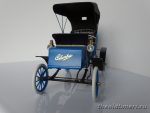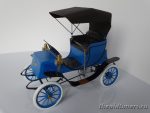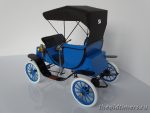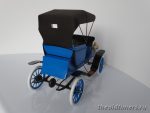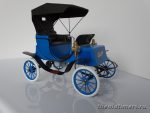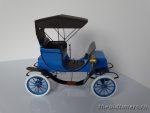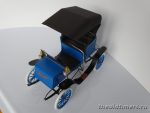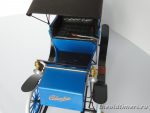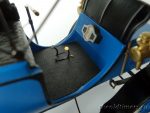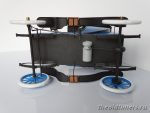Photo model Columbia Electric 1906
The Electric Automobile is another of the rarities in America’s passing parade of automotive achievement. Like the Steamers, the Electrics did not lend themselves to the rapid development of speed and flexibility which was being demanded by a fast growing motor conscious public. The Electrics were tied down to their battery chargers, so to speak. That is, since they depended on battery power to operate their motors, they could go only so far as the electrical charge in the batteries permitted. This range was only around 40 to 50 miles. No long distance travel was possible at this rate and to a people fast turning to living on wheels, this made the Electric undesirable.
However, the electric did have some ad-vantages. There were no fuel lines or radiators to freeze in the winter and no overheating in the summer. No fumes from a smelly gasoline motor and silent as opposed to the noisy gasoline cars of their days. These features made the cars particularly attractive to Milady and she did use the car in a genteel sort of way to do her shopping, to visit her friends in the afternoon and to attend the then distinguished functions of the day. With batteries fully charged, the Electric was immediately available and so the car was also used by physicians who didn’t relish the idea of cranking or coaxing a gasoline engine into running in the middle of the night.
The Columbia Electric was manufactured by the Electric Vehicle Company of Hartford, Conn. It was powered by a 1-1/2 horse power motor, was chain driven and had three speeds. It cost $1350 and weighed 1610 pounds. Our model was designed from an original which is in the possession of Major L. R. Lohr, President of the Chicago Museum of Science and Industry. This car is in actual operation and is used frequently. Major Lohr also owns a number of other electric vehicles and these were used during the last war for travel in and around Chicago when gasoline was being rationed.
All in all the Electrics possess an appeal and charm of their own. Their stately old fashioned appearance cannot be overlooked by even the most disinterested. Furthermore, there is no denying the fact that they enhanced a period of American life long since forgotten.
- Columbia Electric 1906 #1
- Columbia Electric 1906 #2
- Columbia Electric 1906 #3
- Columbia Electric 1906 #4
- Columbia Electric 1906 #5
- Columbia Electric 1906 #6
- Columbia Electric 1906 #7
- Columbia Electric 1906 #8
- Columbia Electric 1906 #9
- Columbia Electric 1906 #10

